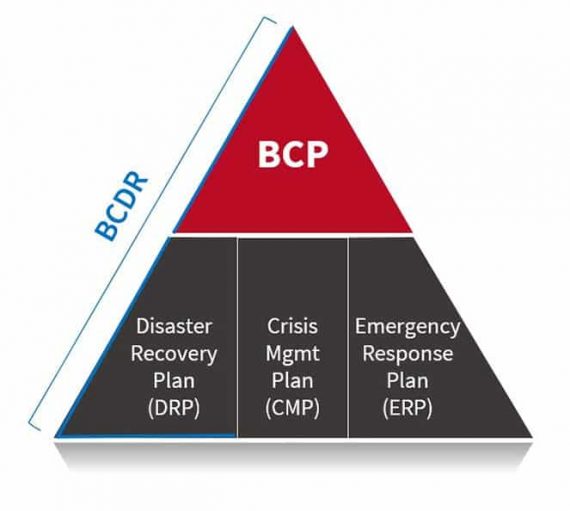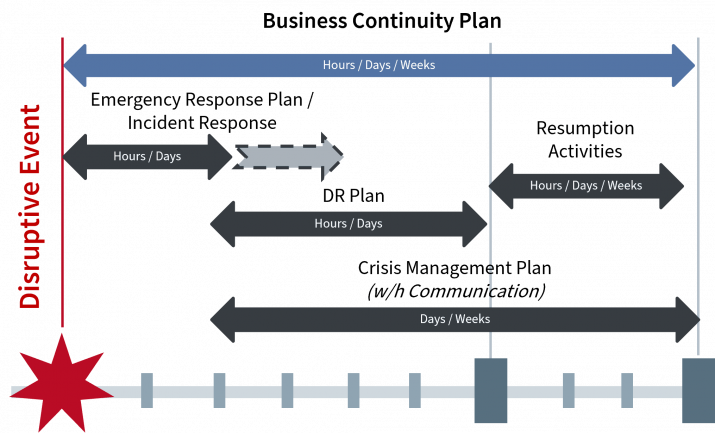Disaster Recovery
A-to-Zerto Glossary of Terms
Overview
Organizations depend on IT infrastructure, applications, and data being constantly available. When a disaster causes extensive IT downtime and data loss, the combined costs can put a organization out of business, make critical public services unavailable, and even threaten national security. Disaster Recovery —from strategy and planning to testing and execution—aims to mitigate and manage downtime and data loss.
Related Topics
What Is Disaster Recovery (DR) ?
Disasters that cause IT downtime and data loss range in size and event type, but they all threaten your organization’s ability to do business.
In IT, disaster recovery (DR) is a combination of plans, procedures, and data protection and recovery solutions that can bring your IT services and data back online as quickly as possible with minimal data loss from a disruptive event. DR for many organizations is a requirement for service-level agreements (SLAs) or industry regulations.
Without a DR solution and plan in place, organizations can face downtime and data loss measured in days. With an effective plan and solution in place, a prepared organization can recover within minutes with near-zero data loss.
DR can not only help you react to unplanned events (natural disasters, infrastructure failures, power outages, user errors, corruptions, etc.), but also help you protect your data during planned disruptive events (migrations, cloud adoption, datacenter consolidations, etc.). DR enables IT resilience.
Disaster Recovery Guide: Everything You Need to Know about DR
Key Considerations of Disaster Recovery
When creating your DR strategy, you should consider several key points to help your organization be prepared when disaster strikes.
- Recovery time objectives (RTOs) and recovery point objectives (RPOs). The two most important factors in DR are getting operations back online as quickly as possible (RTO) and preventing data loss (RPO).
- Ransomware resilience. One of the most prominent human-made disasters causing disruptions is ransomware. Your DR strategy should make protection from ransomware a priority.
- Workload prioritization. As you analyze your data, you can identify which systems, applications, and data need the highest levels of data protection and availability and which might require less.
- Total cost of ownership. Look beyond the purchasing cost or licensing cost. The total cost of ownership will include costs for implementation, management, training, and recovery.
- Data replication technologies. Your strategy’s replication technologies should be virtualized and cloud compatible.
- Disaster recovery as a service (DRaaS). If your organization doesn’t have a suitable site or expertise for DR, consider DRaaS as a solution.
Disaster Recovery Plan
Business Continuity and Disaster Recovery
Business continuity (BC) is interconnected with disaster recovery (DR), forming the common acronym of BCDR. Business continuity is about maintaining operationality for the organization while disaster recovery focuses on restoring IT systems after a disruption.

Business continuity planning leads to the establishment of a business continuity plan (BCP) whereas disaster recovery planning produces a disaster recovery plan (DRP). DRP is considered a subset of a BCP, along with the crisis management plan and the emergency/incident response plan.
Below is an example of how these plans get lined up from a timing standpoint. In real situations, not all of them are necessarily triggered.

Let’s take the example of a malfunction of the A/C in a datacenter. After the alert being processed by the incident response team and validated, the DR plan gets invoked. As temperature rises in the datacenter, the DR team execute a failover to its secondary site before all systems power down in safety mode. Operations are uninterrupted. IT and infrastructure teams get dispatched to diagnose and repair the A/C issue. Once the A/C is up and running again, the DR team does a failback to the primary site. Operations are still uninterrupted. No resumption activities were required and no crisis management plan ever got triggered.
Business Continuity Plan (BCP) vs Disaster Recovery Plan (DRP): What's the Difference?
The Plans in Business Continuity
How Zerto and HPE Deliver Exceptional Disaster Recovery
The DR challenge for IT is to stay protected enough to efficiently handle unplanned disruptions while also being able to innovate through planned disruptions that deliver business value. Zerto has been a leader in DR for over a decade by providing the best RTOs and RPOs at scale for enterprise environments.
Zerto brings together disaster recovery, ransomware resilience, and data mobility into a single solution across on-premises, hybrid, and multi-cloud environments that delivers RPOs of just seconds, and RTOs of a few minutes.
HPE GreenLake for Disaster Recovery, a SaaS-based DR solution built with proven Zerto technology, delivers the same low RPOs and RTOs, while meeting stringent SLAs, on a single cloud control plane .
Zerto for Disaster Recovery
HPE GreenLake for Disaster Recovery
Other Resources
LATEST FROM ZERTO SEE ALL
Resource Center
Discover and access content from Zerto and 3rd parties (IDC, Gartner, ESG, etc.) related to Disaster Recovery.
The Disaster Recovery Guide
Get everything you need to know about disaster recovery in one guide.
Disaster Recovery Blog Series
Get some insights on how DR is evolving and some perspectives from customers about how they enact it.
What is Zerto?
Learn about Zerto and how it can help you solve your disaster recovery challenges.